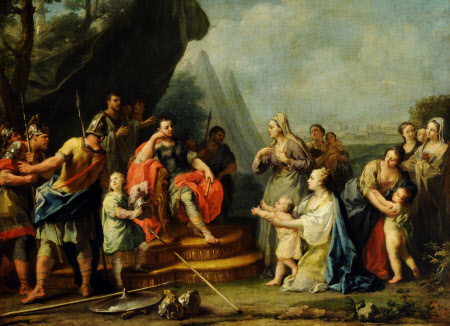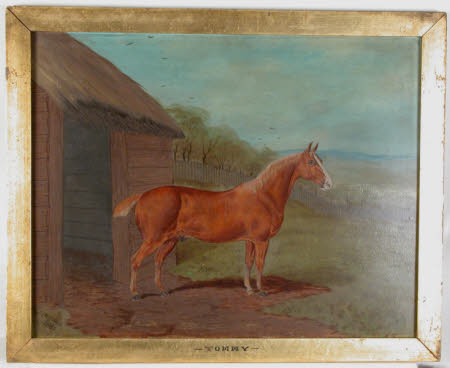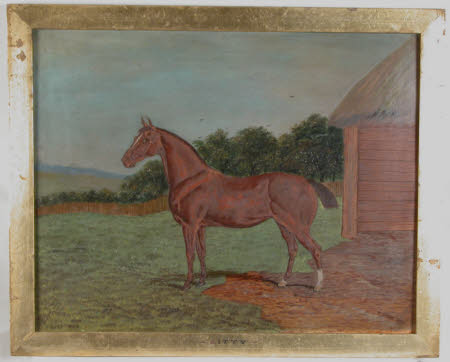Coriolanus entreated by his Womenfolk
Jacopo Amigoni (Naples c.1682 - Madrid 1752)
Category
Art / Oil paintings
Date
1700 - 1752
Materials
Oil on canvas
Measurements
686 x 940 mm (27 x 37 in)
Place of origin
England
Order this imageCollection
Calke Abbey, Derbyshire
NT 290446
Caption
Caius Marcius, called Coriolanus, was allegedly a Roman general who lived around 5th century BC, according to Plutarch’s Lives, which was the source for Shakespeare’s eponymous tragedy. In a disagreement with the people of Rome and the Senate, he was exiled and fled to his old Volscian enemy, Attius Tullus Aufidius. Together they plotted to destroy Rome. They plundered many cities on the way but retreated from the capital when the women, along with his mother and wife, Veturia (called Volumnia by Shakespeare) and Volumnia (called Virgilia by Shakespeare) and his two sons, implored Coriolanus to cease the attack. The episode occurs in Act V, scene iii of the play although this is not necessarily a direct illustration.
Summary
Oil painting on canvas, Coriolanus entreated by his Womenfolk by Jacopo Amigoni (Naples 1682 – Madrid 1752). Coriolanus is enthroned in a gilt chair on a dais with two steps, under a cliff in a landscape. Behind him are followers and soldiers, a boy beside him, holding a plumed helmet. In front of him are his mother and wife and other women and children of Rome.
Provenance
Acquired with Calke Abbey's contents, with the aid of a grant provided by the National Heritage Memorial Fund, thanks to a special allocation of money from the Government and transferred in lieu of tax on the estate of Charles Jenney Harpur-Crewe (1917 - 1981) to the National Trust with the house that was given by Henry Jenney Harpur-Crewe (1921- 1991), in 1984
Credit line
Calke Abbey, The Harpur Crewe Collection (acquired by the National Trust with the help of the help of the National Heritage Memorial Fund in 1984)
Makers and roles
Jacopo Amigoni (Naples c.1682 - Madrid 1752), artist



